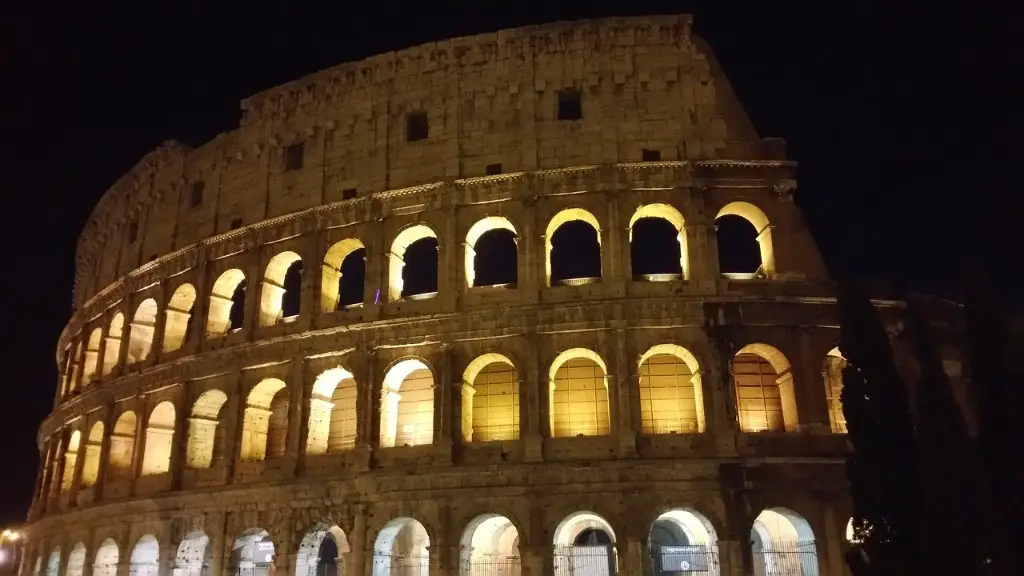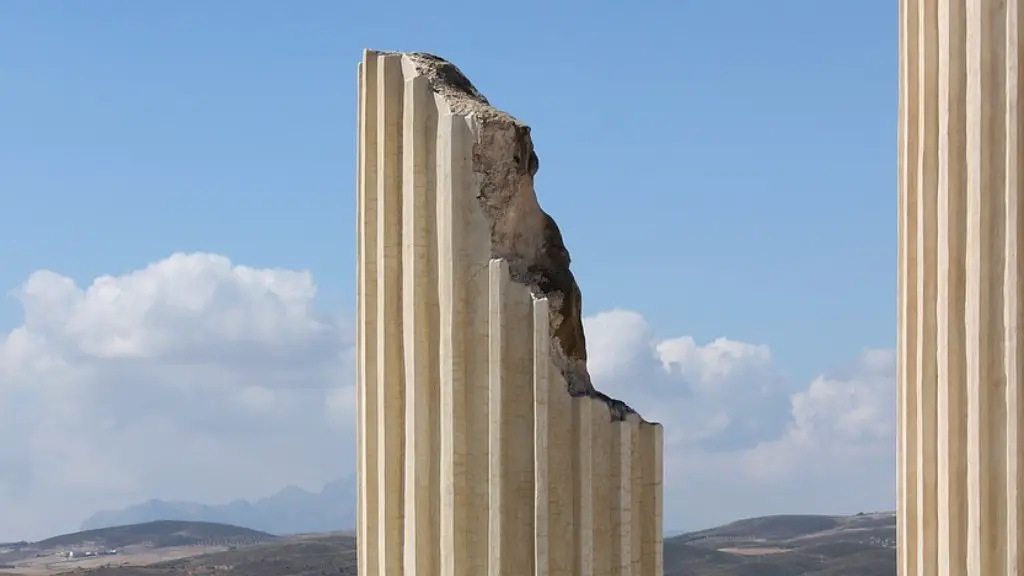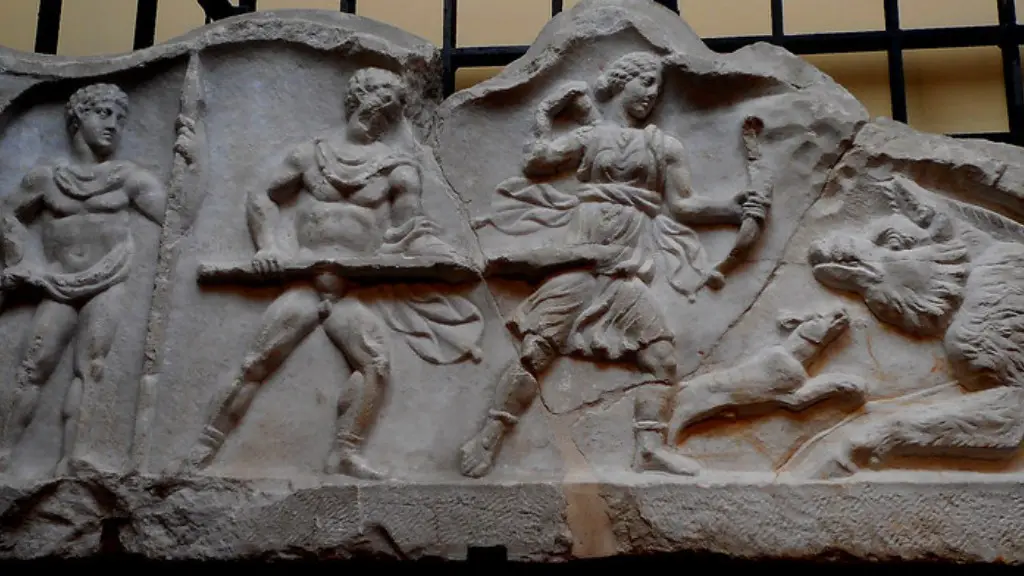Arches have been an architectural staple for centuries and the enduring design of the arch form dates back to Ancient Rome. The Romans with their engineering skill and innovation, along with their eye for aesthetic beauty, used arches to construct virtually all types of buildings from bridges to temples and public baths. But why did the Romans make arches?
The main purpose of the Ancient Roman architects was to create structures that were strong and long-lasting. The use of arches allowed them to create walls and support columns that were far stronger than those constructed with traditional building methods. Arches are self-supporting and don’t need additional support to bear weight. The Romans discovered that a rounded arch spreads the weight along the arch. This allowed them to build larger and heavier structures with fewer materials, making them faster and more cost efficient than traditional methods.
The Romans also realized that arches could be used to create ornate, decorative designs in their structures. Arches are aesthetically pleasing, as they draw the eye upwards and create a sense of grandeur and majesty. Romans used arches in a wide range of ways, from decorating doorways to creating colorful façades on their buildings. Arches also allowed them to construct taller buildings in a shorter amount of time and with less materials, allowing more time to devote to intricate and detailed decorations.
The use of arches was an indispensable part of Ancient Roman design and engineering. The versatility and strength of the arch was a major factor in the success of the Roman Empire. The use of arches allowed them to create larger and more intricate buildings in a fraction of the time and with less materials. Though not all arches constructed in Ancient Rome are still standing, the legacy of the arch design lives on in many of the structures we see today.
Roman Construction Techniques
The Romans were well known for their engineering prowess and their use of innovative techniques and materials. To create arched structures, they relied on a technique called the “true arch,” which utilizes a cantilever system to create a semi-circular, curved shape. By using this technique, the Romans were able to create structures that were incredibly strong and durable. They also developed a technique called the “corbel arch,” which utilizes a wedge-shaped stone placed adjacent to each other in a stepped fashion to create an arch as it gains height.
The Romans also improved upon existing techniques such barrel vaults and groin vaults, which are two additional techniques used to create arched structures. Barrel vaults are semi-circular arches placed in parallel and then connected, creating a strong tunnel shape. Groin vaults, on the other hand, involve placing two barrel vaults at right angles and connecting them with a semi-circular arch. These techniques allowed the Romans to construct elaborate, often large scale structures in a fraction of the time.
The Romans also used a variety of materials in their construction, including stone, cement, clay, bricks and even metal. They also developed a type of hydraulic cement, called “pozzolana,” which is made out of volcanic ash and is extremely strong and durable. This cement was used to bind together the bricks and stone used in the construction of arches.
Roman Engineering Legacy
The Romans’ use of arches and other construction techniques left an indelible mark on the world and a legacy that has endured for centuries. Some of the most impressive pieces of architecture in the world are still standing today, such as the Pantheon in Rome, one of the best preserved buildings from ancient times. The arch design featured prominently in many of the grand public buildings of the Roman Empire, from aqueducts to amphitheaters. Even today, many of these structures have been restored to their original glory.
The arch design used by the Romans has also been adapted and used in a variety of ways in more recent times. Arches have been used in the construction of bridges, cathedrals, government buildings and even homes. The arch has become an iconic symbol of strength and permanence, and is a testament to the ingenuity of the Ancient Romans.
Modern Examples of Roman Arches
Today, arches are used in constructing not just large public buildings, but also small private homes. The arch is a versatile tool, as it can be used to create doorways or windows, and can also be used to create elaborate ornate elements for a building’s facade. Arches are also used to create a feeling of grandeur and add a touch of sophistication to a home. Many modern buildings have used the arch in unique and interesting ways, such as the Sydney Opera House.
Arches can also be used to create bridges, which are among the oldest forms of engineering. Arches are incredibly strong and durable, allowing them to span large distances and bear large amounts of weight. The world’s most iconic bridges, such as San Francisco’s iconic Golden Gate Bridge, are arched structures and are a testament to the strength and durability of the arch design.
In conclusion, the use of arches in Ancient Roman architecture and engineering was a pivotal moment in the development of architecture and engineering as we know it. The use of arches allowed the Romans to create structures that were bigger, stronger and more durable than ever before, leaving behind a legacy that still stands today.
Advanced Grammar Structures
In Ancient Roman architecture and engineering, the use of arches was accompanied by a series of advanced grammar structures, which were key to the success of their buildings. From complex sentence structures to Latin grammar tricks, the Romans had an eye for detail and a passion for language that allowed them to construct some of the most impressive structures in the world. The use of advanced grammar structures in Roman architecture also gave it a unique and distinctive feel, making it instantly recognizable and often imitated.
The use of much-needed grammar structures allowed architects to communicate ideas clearly and effectively communicate their plans, as well as aesthetic decisions. The use of rules and conventions such as the ‘deponens phrase,’ an ancient Roman concept for articulating indirect questions, allowed the Romans to communicate effectively with their colleagues and superiors. Additionally, Latin inflection, which is the assigning of various endings to words, allowed the Romans to express multiple meanings or nuances in a single word.
Today, many of the advanced grammar structures used by the Ancient Romans are still seen in modern architecture. For example, some architects and engineers still use Latin words in their drawings and plans. Latin phrases, such as “solus terra,” which is Latin for “alone on the ground,” are often found in modern architectural plans. Additionally, some of the inflection used in Latin by the Ancient Romans has been adopted by modern architects to add meaning and nuance to their designs.
Structural Designs in Architecture
The Ancient Romans used their knowledge of engineering, materials, and architecture to create structures unlike any other. By combining their skills and resources, the Romans developed what is now known as Roman architecture. This style consisted of a variety of structures and designs, but the use of arches was fundamental to Roman architecture. Arches allowed the Romans to create buildings with larger spans and more variety in their designs. This allowed the Romans to build with greater efficiency, as they could create more intricate and beautiful structures with fewer materials.
In addition to arches, the Romans developed a number of other structural designs to reinforce their buildings, such as buttresses, corbels, and domes. Buttresses add additional support to the structure and create more stability, while corbels take the weight off the walls and transfer them to the ground. Domes, most famously seen in the Pantheon, are semi-circular arches that create a strong curved shape. These structural designs, combined with the use of arches, allowed the Ancient Romans to create some of the most iconic and beautiful buildings in the world, from grand temples to homes and public baths.
Influence of Roman Arches on Modern Architecture
The influence of the Roman use of arches can still be seen in architecture today. Modern architects often implement the arch design in various ways, from large public structures to domestic homes. The arch is also used as an iconic symbol of strength and power, often seen in government buildings, offices, and other important structures. Additionally, many modern homes use the arch design to create large windows and doors that add an ornate and unique touch to the building.
The influence of the Roman use of arches is far-reaching, and can be seen all around the world. The use of arches in modern architecture can create an air of grandeur and elegance, while also allowing architects to create buildings that are efficient and cost-effective. The arch design used by the Ancient Romans has endured centuries of upheaval and change, and still stands today as a testament to their innovation, engineering prowess, and architectural genius.




